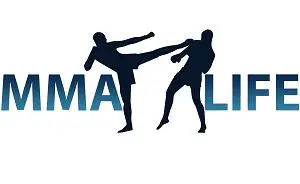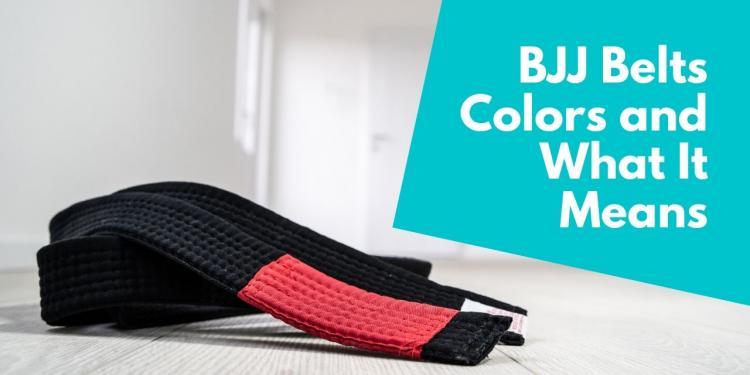In Brazilian Jiu-Jitsu, the color of your belt signifies what rank you are and more importantly is a gauge for how much technique and skill you possess. There is a lot if controversy with the belting system, as the level of a black belt in one gym could only be a purple belt in a more competitive one. Nonetheless, we shall talk about each belt level without bias and based on the true essence and concept of what the ideal practitioner should attain. This is what your skills and technique should be at for each BJJ belt level.
White belt
Like in almost every martial art, white belt is the first belt, where practitioners who are starting out are at their “infant stage”. This is the part of your journey where you first step into unfamiliar territory, like visiting another country for the first time. You always dream of going, you see it all around, in magazines, social media and television, but it’s just too intimidating to try alone. If you’re one of the lucky few, you’ll have a friend with you on the same boat, but for the rest of us, its steps we must take on our own and for ourselves.
At this belt level, you will fail, a lot. You will gas out A LOT. You will get submitted by everyone you can imagine more experienced than you, no matter if they are smaller. So expect to have an open mind and leave your ego at the door, because this is the part where you choose to stay or go.
White belts have to familiarize themselves with the basic concepts of Jiu jitsu. Learning how to shrimp, bridge and escape is one of the more crucial techniques to learn as it will be the ones you will be using the most for now. It is good for a white belt to take everything they can in, but to remember to focus on actually understanding techniques instead of mindlessly going through the motions. There will be numerous times when you won’t understand a given technique at all, and that’s okay. Always come to as many classes as possible and doing as much as you can to learn. All moves are going to be taught again in another class, and by then you would have understood it a tad bit better.
Before getting your blue belt, you should know these techniques:

- Basic BJJ movements: Bridge, shrimp, break fall and technical get-up
- Basic Submissions: arm bar, kimura, triangle, rear naked choke
- How to escape from dominant positions: full mount, side mount, back mount
- Concept of grip fighting
- Concept of guard passing and proper posture inside the guard
- How to tap properly
- Proficiency with 2 take downs in GI and 2 take downs in no GI
- Ability to maintain mount, side mount and back mount efficiently.
- Ability to sweep from closed guard, half guard and open guard.
Blue belt
After 2 – 3 years of training consistently, you should be expected to get your blue belt. The IBJJF requires a student to be at least 16 years old to be eligible for a blue belt. This is the very first rank you will really be looking forward to because you can actually tell people you’re a BJJ Blue belt and not a “4 stripe white belt that is due to get his blue belt soon”. You will feel proud at your accomplishment, but this is the belt level where a majority of practitioners quit. “Bluebeltitis” is a common term used in the Brazilian Jiu-Jitsu community referring to someone who quits at blue belt.
At blue belt you should have a firm grasp of all the basic positions. This includes being able to execute techniques AND pass the closed guard, half guard, and open guard efficiently. Your submission game should be focused on sharpening the tools you already have as they will be your bread and butter which is something you can fall back on. This is also where you should start experimenting on ankle and wrist locks, both offensively and defensively, as you will run into these submissions more often than not. Your stay in blue belt will be be tedious, as trying to get your purple belt will be the longest part of the journey.
Before getting your purple belt, you should know these techniques:
- Straight foot locks: How to attack and defend.
- Wrist locks: how to attack and defend
- Mastery of the basic submissions and positions.
- Proficiency with guard recovery
- Wider array of advanced submissions .
- Greater proficiency in take down and take down defense.
Purple belt
Once you hit purple belt, you will realize those 3 – 4 years of training was well worth it. The IBJJF requires students to be at least 16 years old and have spent a minimum of 2 years at blue belt to be awarded their purple belt. At this rank you are already proficient at grappling and should be able to defend yourself from untrained assailants. Purple belt is also where you can officially start teaching and assisting the Professor in class.
Purple belt is where you start forming your own game or BJJ identity. You will start identifying yourself as a top or bottom player, and you will have a set of techniques you will be known for by the people you frequently roll with. At this belt level you should be able to secure a submission from side mount, mount and Back position with high percentage.
Before getting your brown belt, you should know these techniques:
- Technical mastery of all fundamental sweeps, passes and take downs.
- Has a handful of escapes for both sides of any position
- Finding and solidifying your BJJ Identity; Are you a top or bottom player?
- Can impose their game on an opponent through sequences of techniques
- Able to Adapt their game to a trained opponent of any size.
Brown belt
At brown belt you can say already say you are the master of the art, as the road from brown to black is the shortest. The IBJJF requires students to be at least 18 years old and have been a purple belt for one and half years to be eligible for their brown belt. Once you reach this far, your game is solidified and you consciously know what positions you want to be in and which ones you don’t. In other parts of the world, they make brown belts and black belts compete in the same division as the supposed difference in skill is not that far off. IBJJF heavyweight and open weight champion Rodolfo Viera used to tear up the mixed brown/black belt division as a brown belt.
Knee bars and muscle slicers will now also be legal to use at this belt level. Being able to go take advantage of this opportunity is a great way to learn a new playstyle that you we not able to in the lower belt levels because of the restrictions. This makes open guard a little more tricky to be in because now your legs are exposed to all these new leg attacks, but at the same time teaches you how to me more conscious about leg placement and the proper way to position yourself in a real self-defense scenario, as anything goes in a street fight after all.
Before getting your black belt, you should know these techniques:
- Can adapt to any situation; Has a response to every action in any position.
- Conceptual mastery of brazilian jiu-jitsu: there is rarely a position you are unfamiliar with.
- Knows all the capabilities and limitations of his/her own body type and BJJ game.
- All movements and techniques are crisp and fluid when performed.
- Ability to teach brazilian jiu-jitsu and lead a class with confidence and ease.
Black belt
When you attain the rank of black belt, you should be proficient in every position in Brazilian jiu jitsu. Your passes, sweeps and takedowns should complement each other, with the ability to create sequences and chain it all into devastating submissions. You should rarely feel like you are in unfamiliar territory, and when you are, you adapt quickly. One great black belt to learn from is Marcelo Garcia, widely considered to be the greatest no-gi competitor of all time. Throughout the years and as the sport grows in numbers and in techniques, he slowly tweaks his own game just enough to be able to hang with the even the best without truly losing the essence of his own playstyle.
Being given this honor is highly respected and “fake” black belts and McDojos are pointed out and shunned in the Brazilian Jiu-Jitsu community. As a black belt, you have the responsibility of guiding those around you to attain the same position you are in. Like how doctors abide by a Hippocratic Oath, Black Belts should also possess the ability to freely share ones knowledge as much as they possibly can and to whoever needs it.
For more information on IBJJF belt requirements, go to this page.





